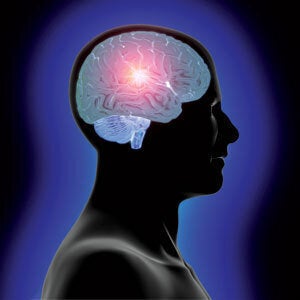
Situations like the national economic crisis toss us many complicated decisions. The biggest challenges of the day, like the stimulus package or particular bailouts, involve so much information and so many tradeoffs that few of us can evaluate the details in any rational way. We boil it all down, but we use different strategies.
Our most recent brain imaging research showed neural mechanisms for the methods people use when they face complex decision problems.
We used fMRI (functional magnetic resonance imaging) to measure brain activation as people worked through a complex problem. They had to choose between two possibilities, each of which could result in a range of actual money gains and losses (yes, real money, though not a lot, was at stake).
People varied in the strategies they used to solve these problems. For many, simplification came naturally -- they chose the possibility that had more "good" outcomes than "bad." Others considered more of the details of the decision problem and made decisions closer to traditional economic models, which minimize losses.
We found that different sets of brain regions predicted whether someone would use more simplifying or more rational approach to decision making. From brain images alone, we could predict which approach people had used.
Notably and surprisingly, the parts of the brain that are often linked with conscious, rational thought -- the prefrontal cortex, for example -- were most active when people used the simplifying rules to make a choice. In contrast, regions of the brain typically linked with more emotional processing became active when people made choices consistent with rational economic models.
The findings suggest that there are no "rational" or "irrational" brain regions. The same region can lead to rational or irrational behavior depending on personal preferences and the sort of decision problem one faces.
With anything as complicated as our own personal financial situation, it is impossible to expect that our decisions are going to be completely rational, cost- and benefit-based choices. Instead, we make a decision after the brain computes and simplifies the mess of information into a manageable idea. We learned something else: a brain region located along the middle of the brain in the prefrontal cortex appears to shape a balance between simplifying and rational approaches to decision problems.
Whenever we use an approach that opposes our normal tendency -- when a normally rational person simplifies a complex problem to just "good" vs. "bad" -- this region becomes more active, and its activation becomes more tightly linked to the regions that implement our decisions.
We could literally look at the brain responses to rewards and predict the decision strategy that a person used while performing the decision task. When someone gains money, activation increases in an area of the brain called the striatum. When someone loses money, activation in the striatum decreases.
Strikingly, people who had the biggest increases when they gained, and the biggest decreases when they lost -- those with brains most sensitive to rewards -- were most likely to use a simplifying decision strategy. That strategy compared the number of potentially good outcomes to the number of potentially bad outcomes.
People at the other end of the spectrum, whose brains were more neutral about immediate gains and losses, tended to make decisions in a more economically rational manner, exploring a series of tradeoffs to minimize losses. The bottom line is that the way we make decisions results, in part, from low-level biases within our own brains.
Neuroeconomic research has to go beyond brain mapping to create flexible and biologically plausible models for decision making across all types of people. Different people have different brains. The brain of an adolescent operates differently from that of an older adult. Learning more about how exactly the brain makes decisions will eventually let us understand why these individual differences arise.
Then we'll learn why different people makes sorts of decisions they do. And in the real world, we'll be able to provide more effective and customized drugs, interventions, and middle-school educational materials for those challenged by so many tough choices.